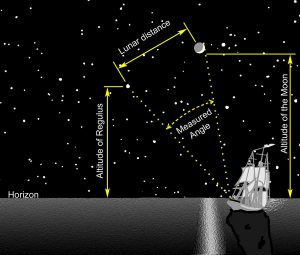the night sky
The Night Sky and the Cree People of Canada (Spring 2018)
When looking into the night sky, it may be hard to wrap your head around what you can and cannot see – there is far more than meets the eye beyond earth’s atmosphere. While the night sky offers stunning views such as the aurora borealis and constellations, these phenomena hold much greater significance for many cultures around the world, including many cultures here in Canada. The Indigenous peoples of Canada have used the night sky to explain the happenings of life for centuries, allowing them to develop a rich culture. Through examining the relationship between science and stories of the sky, we will explain how Indigenous cultures used the night sky to share their beliefs, specifically through looking at the stories of the Cree peoples. The research question we seek to answer is, how do we know Cree stories are used by the people to share their perspectives and theories about the night sky and the science within their culture?
The Night Sky – Evidence For a Round Earth (Winter 2018)
The spherical nature of planet Earth is something that most hold as common knowledge in this day and age, a fact that we take for granted as verified and irrefutable. In order to get to this point there were many discoveries and advances in science and technology that had to be made over a long period of time. While the earth was thought at one time to be flat, we currently understand through the mathematical verification, pictorial evidence, and celestial observations that the Earth is round.
But how did we come to the conclusion that our Earth is round, through what methods did we verify our data, and are there any people who have opposed this view? On this website you will be presented with the history of the mathematics and astronomy that convinced early scientists that the Earth was round, visual evidence of the first photograph taken from space, as well as an explanations for how the celestial sphere shows us the spherical nature of Earth. However, critical thinking is important, and in saying this we will present a dissenting view and their thoughts on the matter.

Image from: https://www.straight.com/files/v3/styles/gs_feature/public/images/17/11/astrology_0.jpg?itok=tE2mTw2D
Astronomy vs. Astrology (Fall 2017)
The science of astronomy has been around for centuries. Astronomy can be defined as the branch of science that deals with celestial objects, space, and the physical universe as a whole. Astrology, on the other hand is the study of the movements and relative positions of celestial bodies and the interpretation of them having an influence on human affairs and the natural world. However, how much correlation is there between astronomy and the zodiac signs? Zodiac signs are known to be based around constellations and the Sun, and are used to tell fortunes, predict personality, and much more. Astrology is an in-depth field of study that focuses on the circular path of the sun through the celestial sphere at different times throughout the year. In relation to the constellations, the sun passes through one at the time of an individual’s birth designating them a zodiac sign. How did astrology develop, and what makes it different from the science of astronomy?
The Night Sky (Winter 2017)
The night sky has had an effect on the life system of many cultures. The connection between celestial phenomenon and humans has held great meaning over the past 40,000 years. Astronomy is thought to be one of the oldest of sciences. Ancient cultures studied the sky, which lead to several of the celestial events becoming an integral part of explaining the events throughout their lives. How did the difference in the night sky in the Northern and Southern Hemispheres affect the way that indigenous people explained their surroundings and influence their cultures? We will examine two different ancient cultures, one from the Northern Hemisphere and one from the Southern Hemisphere, to see how the Night Sky helped them to interpret their daily lives.
The Aurora Borealis (Winter 2016)
The aurora borealis, commonly known as the Northern Lights, is a distinctive feature of the Canadian skies and an important part of First Nations folklore. Scientists now know this brilliant natural light show is caused by particles from the Sun interacting with the Earth’s atmosphere, but what are the tools and methods they use to study this phenomenon?



